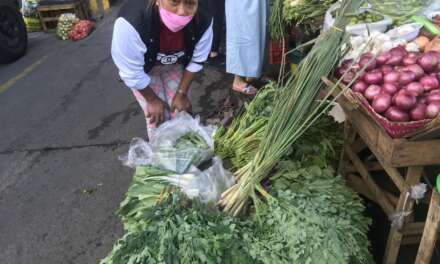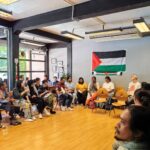by Aileen Kwa
There is no sign of movement from the US and EC, despite noises that they are ready to negotiate. The majors want access to developing country markets, but they also want assurances that their subsidies will be retained.
Negotiators in Geneva are not expecting any breakthrough this week. The main players – US, EU – seem to be setting their sights this year on agreeing a less ambitious “framework” for agriculture negotiations, which is likely to be even more vague than what was in the Cancun Derbez text, and certainly without numbers. Developing countries, such as the G20, seem able to go along with that plan, as long as the Doha mandate and promises of substantial reductions in domestic supports and elimination of export subsidies are not put in jeopardy.
India’s proposal for this watered-down framework is that developing countries commit to x% (for example 66%) of the tariff reduction which the developed countries agree to. It will be surprising, though, if the US and EU endorse this approach. The main sticking point in the negotiations in Cancun was over a very ambitious tariff reduction formula – the “blended” formula, proposed by the US and EC for all Members. Due to the different tariff structures between the developed and developing world, implementation of the same “blended” formula would have slashed developing countries’ tariffs by up to three times that of developed countries. India was pivotal in leading the G20 opposition to such drastic market opening. They have also suggested that the level of tariff reduction developing countries take on should be in step with the proportion of subsidies the developed countries cut.
However, if a loose and ambiguous agriculture framework can be cobbled together by June, a July Ministerial in Geneva would be a probable event. Both US trade representative Robert Zoellick and EU trade commissioner Pascal Lamy are determined to leave their respective positions on a face-saving note. (Zoellick may be replaced if a new administration is elected in the US in November, and Lamy is set to step down after the European elections in June.) There is still uncertainty about how this ministerial will be configured. The US has mentioned it could involve only some Ministers. Or there is the possibility that it could take place during a General Council meeting (but in this case all Members would be involved). Nothing is clear.
The European Commission also seems to be in some disarray. one developing country official said, “Lamy says some nice things in some places, and then Peter Carl (head of the EU trade directorate) comes along and says something different.” Negotiators are also unsure if Lamy and EU agriculture commissioner Fischler agree even between themselves. But the EC seems bent on narrowing the “phasing out (of) export subsidies” promised in Doha to a list of products of interest to developing countries. And this list will be negotiated. Sensitive products such as diary and sugar are off the table. Whilst announcing flexibility, the EC is backtracking on its Doha promises.
The G20 is not willing to accept this, with the exception of Pakistan which unsuccessfully tried to encourage the group to acquiesce. In Cancun, Pakistan also attempted to get the G20 to agree to the US/EC proposed market access formula.
Informally, one G20 negotiator commented, “Steps will be taken to give the impression that things are moving this year. And some kind of watered-down framework could be accepted by July. However, it should not be anything that keeps us from sleeping.”
One wonders if his assurances are well grounded, since no headway looks likely in domestic supports and export subsidies. At the FTAA meeting in Miami in November last year, Brazil’s minister for foreign affairs Celso Amorin said that believing the US will reduce supports is tantamount to “believing in fairy tales”. Throw the EU into the same pot.
Given this scenario, a watered-down agriculture framework agreement in July this year would still tie developing countries to tariff reduction, even if these are “pegged” at, for example, 2/3 the tariff reduction of the US/EC. Already the developing world is staggering under dumped agriculture produce. With continued, and even increased US/EC subsidies expected in the coming years, the WTO will become the instrument legalizing yet more dumping. Not a pretty sight for “multilateralism”.
* Aileen Kwa is a policy analyst with Focus on the Global South. She has been following the WTO since its inception in 1995.
* Aileen Kwa is a policy analyst with Focus on the Global South and is co-author, together with Fatoumata Jawara of “Behind the Scenes at the WTO: the real world of international trade negotiations”, Zed Books, 2003.







